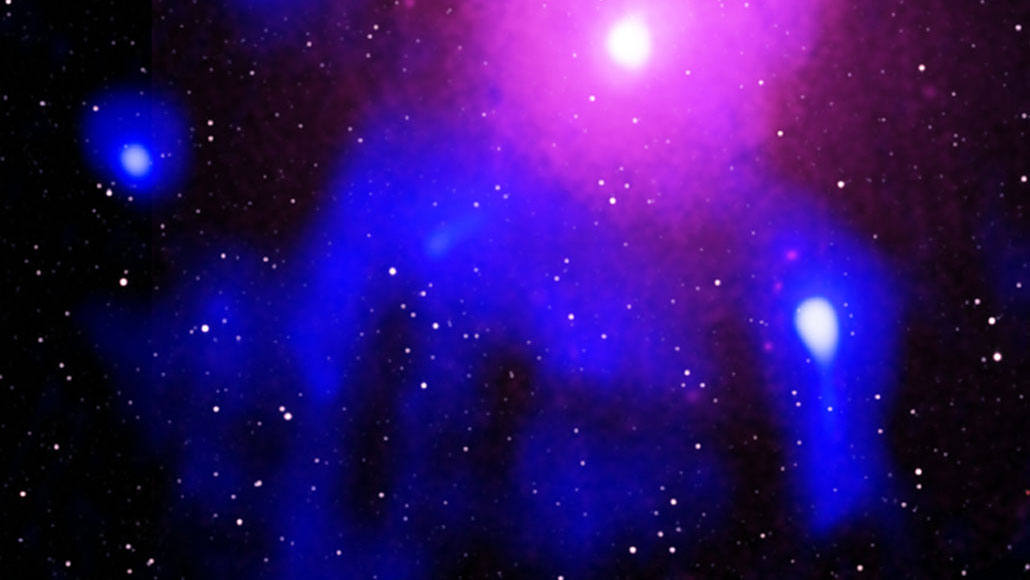
Radio waves (blue in this composite image) trickle out of a cavity in hot X-ray emitting gas (purple) enveloping a massive galaxy (white, top). The radio waves likely come from high-speed electrons accelerated by an eruption long ago from a gargantuan black hole at the galaxy’s center.
X-ray: S. Giacintucci et al/NRL, CXC/NASA, XMM-Newton/ESA; Radio: GMRT, TIFR, NCRA; Infrared: 2MASS/UMass, IPAC-Caltech/NASA, NSF